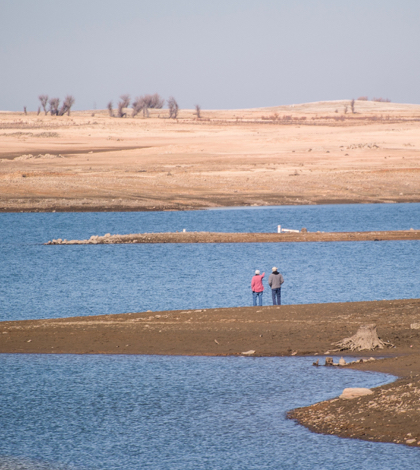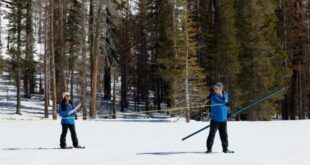California is beginning to receive desperately needed rain and snow through a series of powerful Pacific storms over the next week or two. However, the return of wetter weather after a very dry February and prolonged California drought can be too much of a good thing, resulting in flooding and mudslides.
It’s predicted that Folsom Lake Reservoir, near Sacramento, could get an inflow of 250,000 acre feet from the storms. One acre foot is equal to about 325,900 gallons.
Billions of gallons of water was released from Folsom Lake Reservoir in anticipation of the coming storms and due to U.S. Army Corps of Engineers rules that mandate the reservoir can only be at 60 percent of capacity during the winter. The empty space in the reservoir works as a buffer to prevent flooding and prevents the dam from failing during a major storm.
Flood control rules for western states were created in the 19th century, research meteorologist Dr. Marty Ralph told KQED. “And yet here we live in the 21st century with its special and new needs: greater population and a changing climate,” Ralph said.
According to the California Department of Water Resources, Folsom Lake Reservoir’s capacity is just below one million acre-feet. The current storage of the lake is at 606,177 acre-feet which is 62 percent of the total capacity the lake can hold.
Currently, Folsom Lake Reservoir is 111 percent more full than the historical average on this date.
While releasing that water does have benefits downstream, supporting wildlife and endangered fish, people are unsure that the rules should apply in a fifth year of California drought. And preemptively releasing water does come with risks like in 1997 when the reservoir was lowered and then never filled back up again.
The Corps is considering whether or not to use weather-based operations at Folsom Lake Reservoir next year. The question remains – are weather forecasts precise enough to make the change. The Corps argues not yet.
“When it comes to forecasting the size of events that we’re most concerned about, they are about 20 percent off,” says Greg Kukas, Hydrology and Hydraulics Chief with the Army Corps of Engineers. “We know water supply is incredibly important but we also know public safety is incredibly important.”
For any change to have an impact on the California drought, the flood rules for the state’s reservoirs including Folsom Lake Reservoir would require an act of Congress.
 California Water News Daily Your Source For Water News in California
California Water News Daily Your Source For Water News in California


